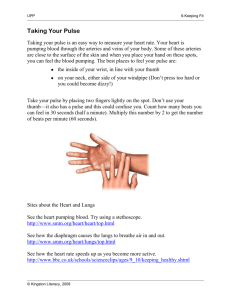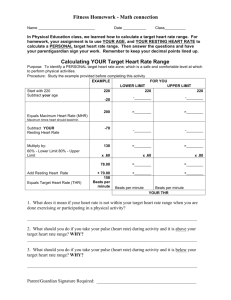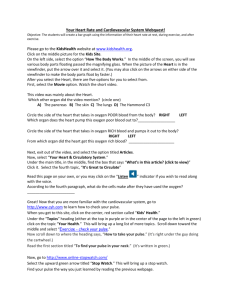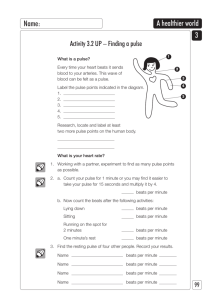doc. 269kB
advertisement
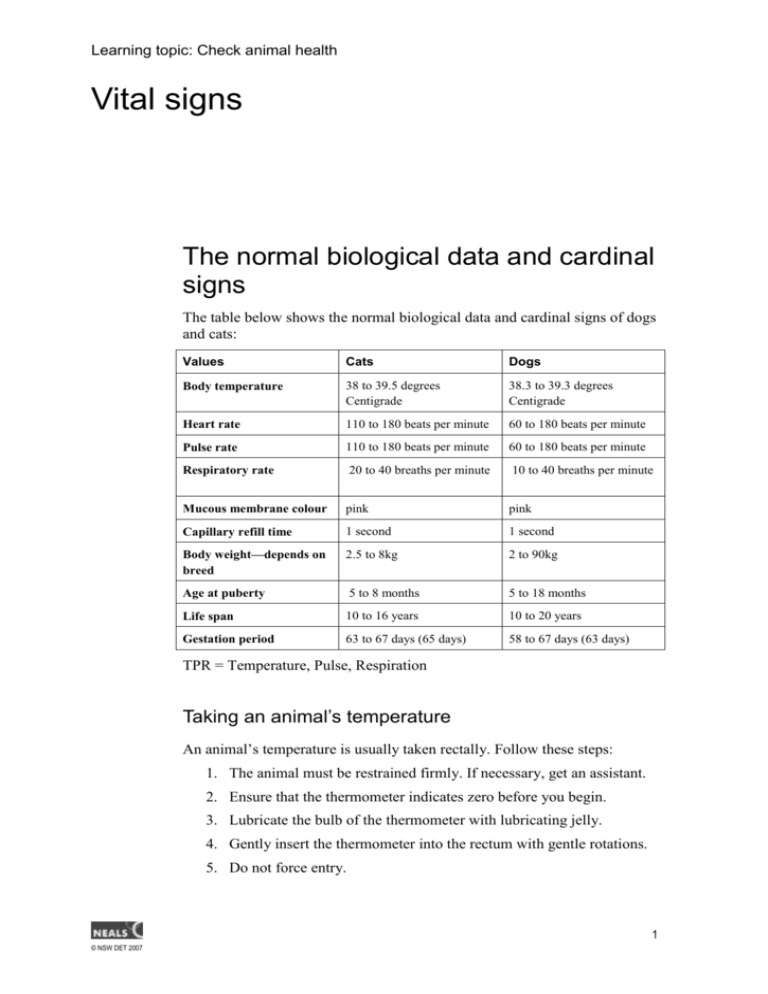
Learning topic: Check animal health Vital signs The normal biological data and cardinal signs The table below shows the normal biological data and cardinal signs of dogs and cats: Values Cats Dogs Body temperature 38 to 39.5 degrees Centigrade 38.3 to 39.3 degrees Centigrade Heart rate 110 to 180 beats per minute 60 to 180 beats per minute Pulse rate 110 to 180 beats per minute 60 to 180 beats per minute Respiratory rate 20 to 40 breaths per minute 10 to 40 breaths per minute Mucous membrane colour pink pink Capillary refill time 1 second 1 second Body weight—depends on breed 2.5 to 8kg 2 to 90kg Age at puberty 5 to 8 months 5 to 18 months Life span 10 to 16 years 10 to 20 years Gestation period 63 to 67 days (65 days) 58 to 67 days (63 days) TPR = Temperature, Pulse, Respiration Taking an animal’s temperature An animal’s temperature is usually taken rectally. Follow these steps: 1. The animal must be restrained firmly. If necessary, get an assistant. 2. Ensure that the thermometer indicates zero before you begin. 3. Lubricate the bulb of the thermometer with lubricating jelly. 4. Gently insert the thermometer into the rectum with gentle rotations. 5. Do not force entry. 1 © NSW DET 2007 6. Retain in the rectum for a minimum of sixty seconds. 7. Gently remove and wipe faeces from the end. 8. Read immediately and record finding. How do I locate the pulse on an animal? The pulse can be taken at any point on the body where a major artery runs close to the body surface. Each pulsation corresponds with a contraction of the left ventricle of the heart. Follow these steps to take the pulse rate: 1. Restrain the patient. 2. Ensure that the patient is relaxed and still. 3. Using the tips of your fingers, apply them directly on the femoral artery located on the middle of the inside of the upper hind leg. 4. Count the rate of pumps over 15 secs x 4 to get rate/minute. Note: If there is a difference between the pulse rate and the heart rate, there is a serious circulatory problem and immediate professional help must be sought. Taking the respiration rate When taking the respiration rate of an animal: observe the depth and regularity of breathing count the number of expirations for a period of 60 seconds. The TPR will be affected by environmental factors such as: excitement exercise ambient temperature 2 © NSW DET 2007 Learning topic: Check animal health stress. The TPR should be re-assessed when the animal is quiet and rested. Recognising pain in animals It is very helpful to be able to recognise signs of pain in animals. Being able to recognise signs of pain will assist you in identifying when an animal may be injured or unwell. Animals in pain usually display abnormal behaviour. Animal Symptoms of pain Dogs appear quieter and less alert move stiffly or refuse to move lie still or adopt an abnormal posture to minimise its discomfort refuse to eat shiver or pant whimper or howl, especially if unattended growl without apparent provocation may bite, scratch, lick or chew at painful regions when handled, be abnormally apprehensive or aggressive Cats in pain may be quiet and withdrawn refuse food hide or separate itself from other cats react aggressively when a painful area is touched lick at an area of localised pain Horses in pain may bite kick roll sweat refuse to eat refuse to move be lame 3 © NSW DET 2007 Look at the photos of the animals below. What is the animal doing that indicates that it may be in pain? 4 © NSW DET 2007



